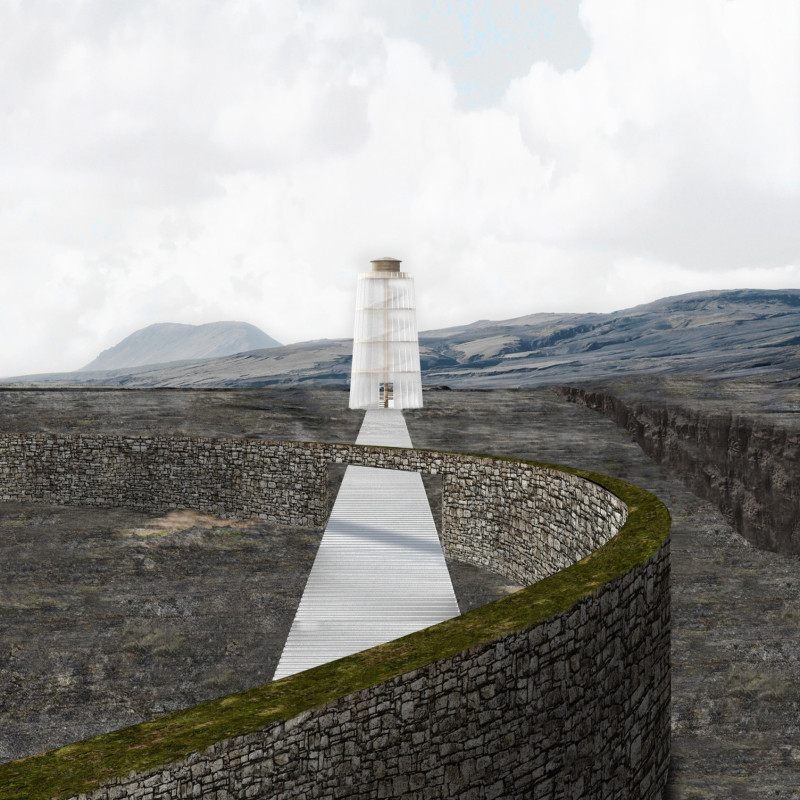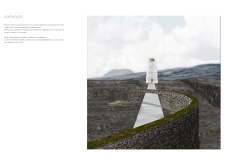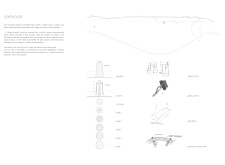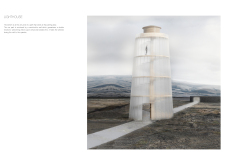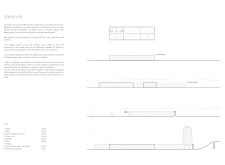5 key facts about this project
The lighthouse design occupies a unique location marked by geological activity and rough sea conditions. As a functional guidepost, it aids visitors traveling to nearby caves while encouraging interaction with the surrounding environment. The design draws inspiration from traditional lighthouse forms yet incorporates modern materials and construction techniques, creating a relevant structure for contemporary needs.
Inspiration comes from classic lighthouse shapes, utilizing a simple wooden frame as the primary structural element. This choice provides stability while maintaining an approachable character. The gentle silhouette offers direction to visitors and establishes a connection with the rugged landscape, contributing to the sense of place.
Whitish opaque polycarbonate panels are central to the design. These materials allow soft, diffused light to fill the interior spaces, making the environment warm and welcoming. As night falls, the lighthouse glows like a lantern, illuminating its function as a navigational aid for those near the coast.
A semicircular wall surrounds the parking area, serving a dual purpose. It welcomes visitors and hides parked vehicles from view, creating an inviting space while subtly directing movement toward the lighthouse. The use of local dark volcanic stone cladding enhances the structure’s visual and textural harmony with the environment, grounding the design within the landscape.
The pathway leading to the lighthouse features non-slip iron-glass panels, offering a unique experience for visitors. This transparent surface allows a glimpse of the earth below, enhancing the feeling of immersion. As people walk towards the lighthouse, the path appears to dissolve, leading them to a carefully designed spiral staircase that encourages exploration.


